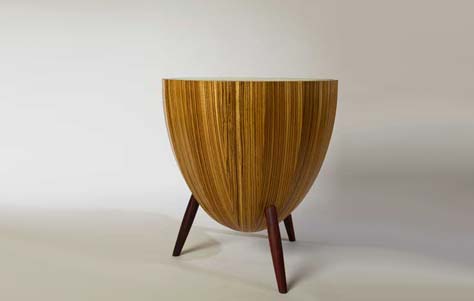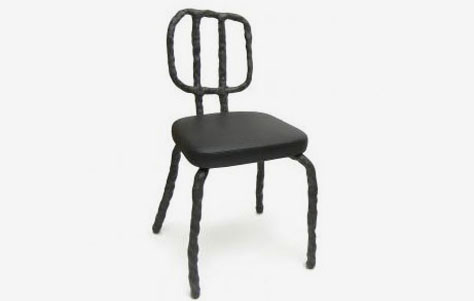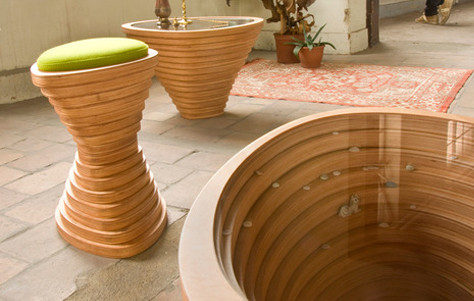Bursting with Color: The Artichoke Table by David Rasmussen Design
My brother went through a rock phase. He had a rock spinner and he collected exotic (store-bought) rocks from relatives to add color to his glossy agate collection. Bringing me back, the beautiful Artichoke table by David Rasmussen Design has the look of gorgeous, split rock given its colorful center. To Rasmussen, it was the delicious vegetable that inspired its name.
Artichoke Table. Designed by David Rasmussen Design.
Swirling Paint Sanded to Tabletop Perfection: The Artichoke Table by David Rasmussen Design
The description of the low-set Artichoke table talks of its body being made using a “shop-molded plywood faced with zebra wood veneer and coopered to form the elliptical shell.” Excitable wood shop language in true form, Rasmussen’s avant-garde vision for carpentry comes from his training where masters in the furniture field – Wayne Marcoux and Dan Mosheim – taught him of Danish, Ming Dynasty, and contemporary American studio styles.
With Cocobolo legs mortised into the shell and artist Scott Harris using his acrylic painting skills with a smooth sanding for the tabletop, the Artichoke table is no doubt the kind of furnishing that is passed down as an heirloom for generations to come.

Why settle for a basic wood table when you can add a jolt of creativity – and possibly a flood of rock collecting memories? Its painted top, rounded sides, and three legs put the Artichoke table by David Rasmussen Design in an exotic collection of its own.
About the Designer: Raised and educated in New England, David Rasmussen Design was imagined after Rasmussen was exposed to and motivated by the Northeast's rich culture of fine furniture making. His designs include everything from dining, seating, desks, tables and bedroom furniture to custom cabinets, built-ins, and odds in ends. He’s even been known to take on treehouse building, making them handicap-accessible to prove that “"anyone can climb a tree and take a walk in the woods".





Leave a Reply